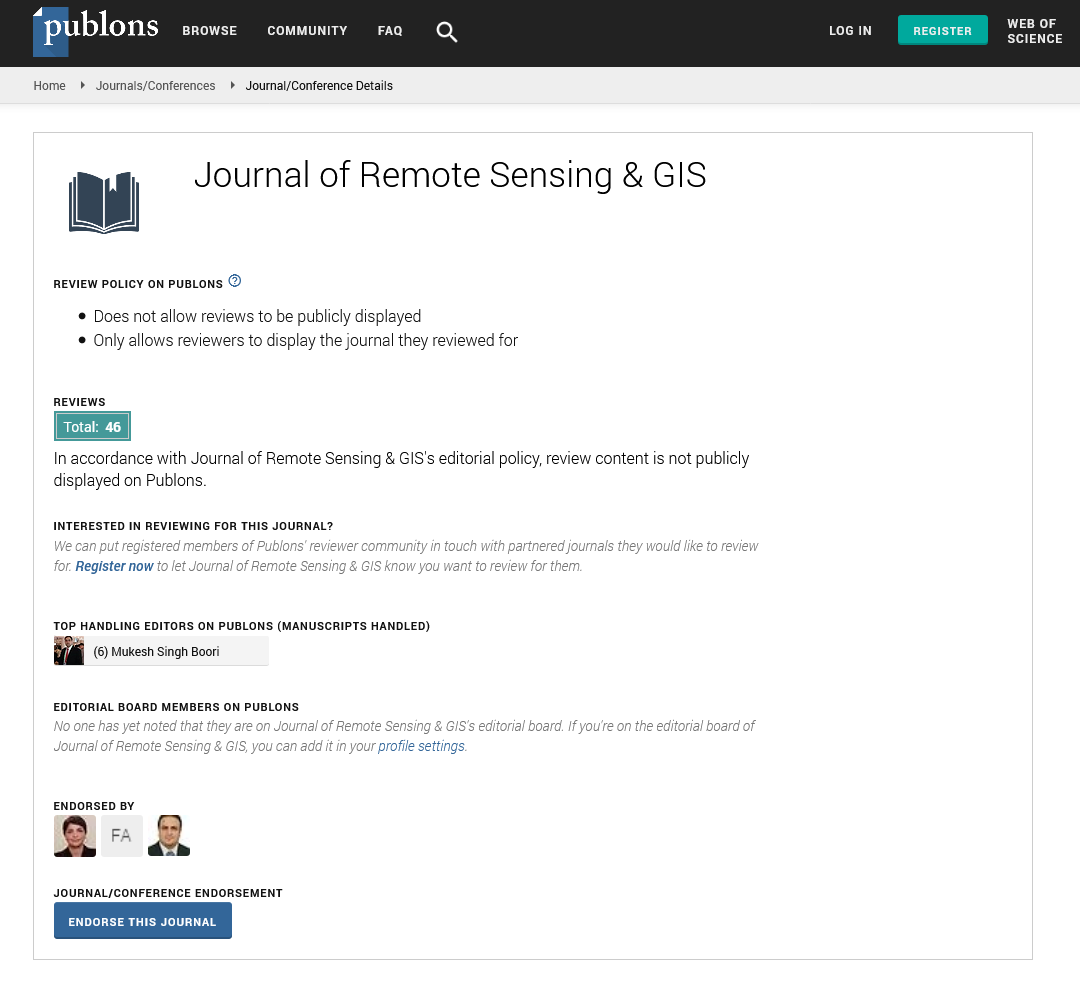Indexed In
- Open J Gate
- RefSeek
- Hamdard University
- EBSCO A-Z
- OCLC- WorldCat
- Publons
- International Scientific Indexing
- Euro Pub
- Google Scholar
Useful Links
Share This Page
Journal Flyer

Open Access Journals
- Agri and Aquaculture
- Biochemistry
- Bioinformatics & Systems Biology
- Business & Management
- Chemistry
- Clinical Sciences
- Engineering
- Food & Nutrition
- General Science
- Genetics & Molecular Biology
- Immunology & Microbiology
- Medical Sciences
- Neuroscience & Psychology
- Nursing & Health Care
- Pharmaceutical Sciences
Monitoring responses of vegetation phenology and productivity to extreme climate conditions using remote sensing across different sub-regions of China
5th International Conference on GIS and Remote Sensing
September 16-17, 2019 | Rome, Italy
Tehseen Javed and LiYi
Northwest A&F University, China
Posters & Accepted Abstracts: J Remote Sens GIS
Abstract:
Drought is a major natural disaster which has a significant impact on the susceptibility and flexibility of ecosystem by shifting, productivity and phenology. Recently due to global warming a large scale drought and flooding provide unique opportunity to understand ecosystem responses to climatic extremes. In this paper, we investigate the impact of extreme climatic variation on vegetation phenology and productivity over the sub-regions of China. Daily rain gauge datasets were used to predict the air temperature and precipitation trend and compute the Standardized Precipitation Evapotranspiration Index (SPEI). Remote sensing data Moderate Resolution Imaging Spectroradiometer (MODIS) Enhanced Vegetation Index (EVI) data was used to predict the vegetation penology. Our results reveal that; (1) the air temperature showed a significant increasing trend (p < 0.05) over all sub-regions while, precipitation showed insignificant increasing trend in Northwest China (NWC), and insignificant decreasing trends in the North China (NC), Qinghai Tibet area (QTA), and South China (SC). (2) Integrated Enhanced Vegetation Index (iEVI) and SPEI curves depicted that 2011 is driest year and 2016 is wettest year over the period of 2000 to 2016. (3) Rapid change was observed in phenology and vegetation productivity between drought (2011) and wet (2016) years. In drought year vegetation penology delicate change in length of growing season (LGS) (ΔLGS = -14±36 days), and in wet year overall net effect change in starting of growing season (SGS) and end of growing season (EGS), LGS (ΔLGS = 34±71days). (4) The climatic sensitivity increased three times more rapidly with a changing rate of 0.16 from arid to semi-arid and relatively declined from semi-humid to humid region with a decreasing rate change of -0.04. The semi-arid ecology especially NC, NWC and QTA are more sensitive to climatic variation. Therefore, instant action is needed to reduce the negative impact of climate variability and minimize the land degradation rick.

